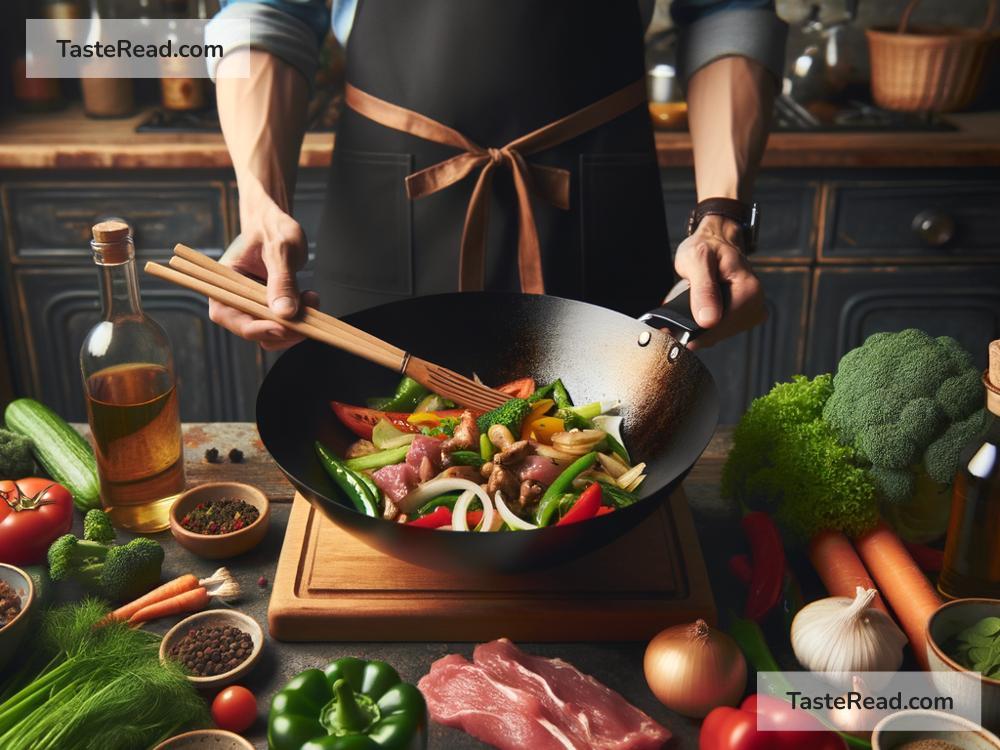Title: My Culinary Expedition into the Heart of Chinese Wok Cooking
Embarking on a journey to master the ancient art of Chinese wok cooking has been an adventure of its own. Growing up, the sizzle from the kitchen, the aromatic spices wafting through the air, and the rhythmic dance of the stir-fry had always fascinated me. The Chinese wok, with its rich history and versatility, is not just a cooking utensil; it’s a vessel that carries centuries of culinary tradition.
My adventure began with a curious mind and a simple goal: to understand and master the techniques of Chinese wok cooking. This pursuit led me down a path of discovery, challenges, and the true joy of cooking. Through patience, practice, and a few mishaps along the way, I found myself not just learning to cook but immersing in a culture’s culinary heritage.
Understanding the Wok’s Essence
The first step in my journey was to understand the wok’s essence. A traditional Chinese wok is round-bottomed, a shape that allows for efficient heat distribution, making it perfect for the high-heat cooking methods common in Chinese cuisine. It’s not just about the stir-fries; the wok is multifunctional, used for frying, steaming, smoking, and even boiling.
Selecting the right wok was my first challenge. I learned that a carbon steel wok is most preferred due to its ability to withstand high heat and quick responsiveness to temperature changes. Seasoning the wok was the next step, a process that involved coating it with oil and heating it until it smoked, creating a natural, non-stick surface. This process not only prepped the wok for cooking but also marked the beginning of my culinary trial by fire.
The Techniques Unveiled
Chinese wok cooking is an art that hinges on two fundamental techniques: “Chao” (stir-frying) and “Bao” (toss-frying). Stir-frying involves cooking ingredients quickly on high heat with a constant stirring motion, while toss-frying — a more advanced technique — involves tossing ingredients in the air within the wok, ensuring even cooking and integration of flavors without crushing the ingredients.
One of the first dishes I attempted was the quintessential “Yangzhou Fried Rice.” It seemed simple enough but mastering the “Wok Hei” — the breath of the wok, which imparts a smoky flavor to the dish — was not as easy as I had imagined. Getting the wok to the right temperature, managing the swift movement of ingredients without overcooking them, and balancing flavors required practice, patience, and a bit of audacity.
Challenges Along the Way
My journey was not without its hurdles. Early attempts saw rice sticking to the wok, unevenly cooked ingredients, and at times, flavors that were far from authentic. However, these challenges were instrumental in my learning process. They taught me the importance of preparation, known as “mise en place,” ensuring all ingredients are ready and within reach before the cooking begins.
I also learned the significance of balancing the “Five Flavors” — sweet, sour, salty, bitter, and umami — that are central to Chinese cuisine. This was not just about following recipes but tasting, adjusting, and understanding how each ingredient contributed to the overall harmony of the dish.
Cultural Immersion and Continual Learning
As my skills improved, so did my appreciation for Chinese culinary traditions. I realized that wok cooking is not just about techniques; it’s deeply ingrained in the culture and history of China. I delved into the stories behind dishes, the regional variations, and how food is intertwined with festivals and traditions. This cultural immersion added depth to my cooking and a profound respect for the cuisine.
My adventure in learning Chinese wok cooking has been richly rewarding. It has taught me more than just cooking techniques; it has offered me a glimpse into the heart of Chinese culture and cuisine. Each dish I now prepare is a narrative of history, a ballet of flavors, and a testament to the resilience of traditional cooking methods.
In conclusion, the journey has been about continual learning. There’s always a new technique to master, a new flavor to balance, and a story to tell. The wok, with its simple yet profound design, has not just been a cooking utensil; it has been my teacher, guiding me through the complexities and joys of Chinese cooking. This journey, with all its flavors and lessons, is far from over, but it’s an adventure that I cherish with every stir, every toss, and every sizzle.


